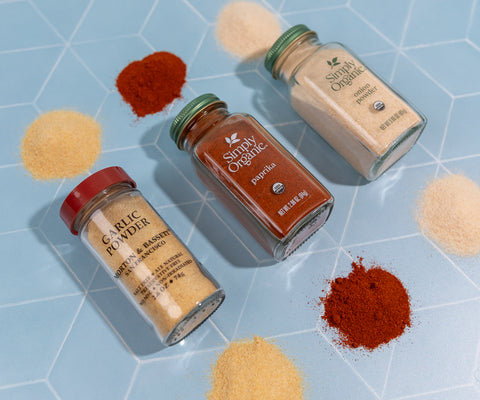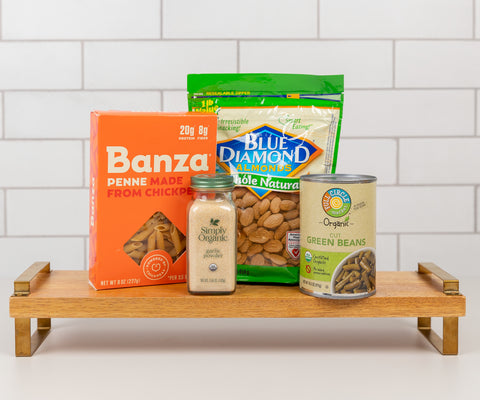It's American Heart Month, making this the perfect time to become salt savvy and learn why paying attention to salt (sodium) intakes can play an essential role in heart health. While sodium is necessary for our bodies to function, too much can hurt our health, specifically regarding blood pressure management and cardiovascular risk. One in 10 cardiovascular deaths worldwide is related to excessive consumption of sodium.1 High sodium intake is associated with high blood pressure (hypertension), and nearly half (48.1%) of the adult population in the U.S. has hypertension.2 A systemic review and meta-analysis of dietary sodium intake and risk of cardiovascular disease was performed, which found that every 1,000 milligrams of dietary sodium intake increased the risk of cardiovascular disease by 6%.3
On average, Americans consume too much sodium. According to the 2020-2025 Dietary Guidelines for Americans, men generally consume more than 4,000 milligrams of sodium per day, and women typically consume more than 3,000 milligrams per day. The American Heart Association recommends consuming no more than 2,300 milligrams of sodium daily, with an ideal limit of 1,500 milligrams or less. For perspective, 2,300 milligrams of sodium is about one teaspoon.
The significant sources of sodium in the diet come from processed food, ready-made (convenience) foods, and salt added when cooking. Condiments are another source of sodium that is often overlooked. For example, just one tablespoon of ketchup is 180 milligrams, and one tablespoon of soy sauce is 800 milligrams.
Shopping the perimeter of the grocery store can be an excellent place to start if lowering sodium is your goal. However, there are many nutritious options in the center aisles as well. Typically, you'll find fresh produce, meat, seafood, and dairy along the perimeter aisles. Fresh fruits and vegetables are naturally low in sodium, making them a nutritious staple in every meal and snack. Additionally, produce such as bananas, citrus, avocados, kiwifruit, cantaloupe, apricots, potatoes, spinach, mushrooms, Brussels sprouts, zucchini, and broccoli are good sources of potassium, which is important for blood pressure regulation.
For convenience this time of year, stop by the frozen fruits and vegetables aisle to find many low-sodium choices. In the meat department, look for fresh meats and eggs, which are naturally lower in sodium and essential for feeling full and preserving lean muscle mass. In the dairy department, you'll find lower-sodium options such as milk and yogurt, which also provide a good source of potassium. Add heart-healthy fiber to your grocery cart by reaching for whole grains in the center aisles (with approximately 3 grams of fiber per serving), such as rice, quinoa, barley, whole-wheat pasta, whole-grain bread, and tortillas.
Become a Label-Savvy Reader
Sodium is listed in milligrams (mg) in the nutrition facts panel on food labels. It's important to note the serving size and consider this with the number of servings eaten. For instance, if a half cup of soup has 540 milligrams of sodium and you consume one cup of soup, the total amount of sodium consumed would be 1,080 milligrams. The good news is that you can find no-salt-added varieties (such as canned vegetables and beans) and reduced-salt varieties (such as broths) in the grocery store. These are the terms and meanings that you may notice on some of those products:
- Salt- or Sodium-Free: Less than five milligrams of sodium per serving
- Very Low Sodium: 35 milligrams or less per serving
- Low Sodium: 140 milligrams or less per serving
- Reduced Sodium: At least 25% less sodium per serving than the usual sodium level
- Light in Sodium or Lightly Salted: At least 50% less sodium than the regular product
Be Sodium Conscious While Cooking
There are options to season dishes at home without adding salt, such as onions, garlic, herbs, spices, citrus juice, and vinegar. For seasonings, find products containing the word "powder" vs. "salt." For example, garlic powder has minimal sodium, while garlic salt has 300-350 milligrams per teaspoon. If no-salt-added canned beans and vegetables are unavailable, drain and rinse to reduce the sodium by approximately 40%.
Take the challenge of becoming salt savvy and learn how much sodium you consume in a typical day by journaling the foods eaten, the amount eaten, and reading the labels for the sodium content. Once you know your number, take the next step to identify the foods with the most sodium.
Connect with your local Hy-Vee dietitian on our virtual nutrition services platform and schedule a complimentary Discovery Session to learn more. Hy-Vee dietitians offer various services to help you meet your weight loss and nutrition goals, including one-on-one consultation packages, personalized menu plan programs, virtual nutrition store tours and more.
The information is not intended as medical advice. Please consult a medical professional for individual advice.
- Mozaffarian D, Fahimi S, Singh GM, et al. Global sodium consumption and death from cardiovascular causes. N Engl J Med 2014;371:624–634. DOI: 10.1056/NEJMoa1304127
- Centers for Disease Control and Prevention. Hypertension Cascade: Hypertension Prevalence, Treatment and Control Estimates Among U.S. Adults Aged 18 Years and Older Applying the Criteria from the American College of Cardiology and American Heart Association’s 2017 Hypertension Guideline—NHANES 2017–2020. Atlanta, GA: May 12, 2023. Accessed July 6, 2023.
- Wang Y-J, Yeh T-L, Shih M-C, Tu Y-K, Chien K-L. Dietary Sodium Intake and Risk of Cardiovascular Disease: A Systematic Review and Dose-Response Meta-Analysis. Nutrients. 2020; 12(10):2934. https://doi.org/10.3390/nu12102934




